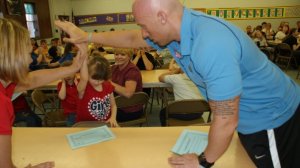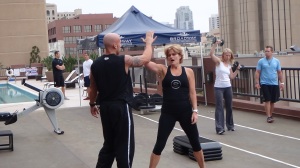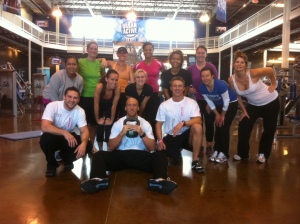“Too often we underestimate the power of a touch, a smile, a kind word, a listening ear, an honest compliment, or the smallest act of caring, all of which have the potential to turn a life around.”
Leo Bascaglia
It is said that 80 percent of communication is non-verbal. It is also common knowledge that there is a psychological effect to touching. In fact there are several scientific research articles stating that when a person is touched by a person they trust, it elevates oxytocin levels and decreases the stress related hormones. Touching has also been shown to develop relationships between two people.
It is the first language we learn,” said Dacher Keltner, a professor of psychology at the University of California, Berkeley, and the author of “Born to Be Good: The Science of a Meaningful Life” (Norton, 2009), and remains, he said, “our richest means of emotional expression” throughout life. One form of touching that is always acceptable and has the power to show appreciation, respect, care and develop the trainer/client relationship we are all after; the high five.
The high five, the same form of non-verbal communication professional athletes exude. The same expression we learn through pee-wee football and little league baseball to show praise for a good job. The high five is the ultimate trainer’s tool for relationship development and appreciation for a client.
Right, wrong or indifferent I touch my clients. I give them high fives to show they have done a good job; I give them a hug when I feel they need it and I tap them gently on the muscle being worked. The power of the high five allows me to do the following:
Develop a great relationship
When I give a high five to a client I show them respect and gratitude for the work they are doing. Sometimes that message is difficult to convey through words. For my super competitive clients this takes them back to athlete days and puts them in an environment they are use too. For everyone it shows appreciation for their work, something sometimes their out-of-the-gym life doesn’t supply. After a great set of bicep curls, supply a simple high hive to show you are paying attention.
Conveys to potential clients my relationship with my clients
In a gym setting, during a 60 minute session on average 14 people will watch at least 20% of the session. This is marketing at its highest! I want to produce the vibe that I care about my clients, especially for potential clients watching me. Post workout, end the session with a powerful high hive, someone on the treadmill above will notice.
Fun
The word fun is often not associated with exercise. People view working out as a chore or that it hurts. Add a few high fives and a smile and now it becomes a little more tolerable. Honestly, after a few sessions, people realize how fun this really can be! Not everyone is an athlete or will think exercise is fun, provide a high five during the session changes the feelings towards exercise.
Help carry the load
Performing a high five to a client, physiologically, signifies I am offering to “carry” their load. “We think that humans build relationships precisely for this reason, to distribute problem solving across brains,” said James A. Coan, a psychologist at the University of Virginia. “We are wired to literally share the processing load, and this is the signal we’re getting when we receive support through touch.” Before a session, especially for my clients who come after work, provide that high five to show you understand their day and you are here to help “carry their load.”
The power of the high five is over reaching. It takes little effort but supplies dramatic reward. Personal training is all about relationships and how those relationships develop, no better way than to communicate through providing your client a simple high five.
Josh “JB” Bowen is an industry veteran, holding many positions within the industry and is currently a personal trainer in Lexington, KY and Quality Control Director for Compel Fitness. He was a global 2013 top ten finalist in Life Fitness’ Personal Trainer to Watch, and author of the 12 Steps to Fitness Freedom. You can find him on Facebook and Twitter.













Leave a Reply